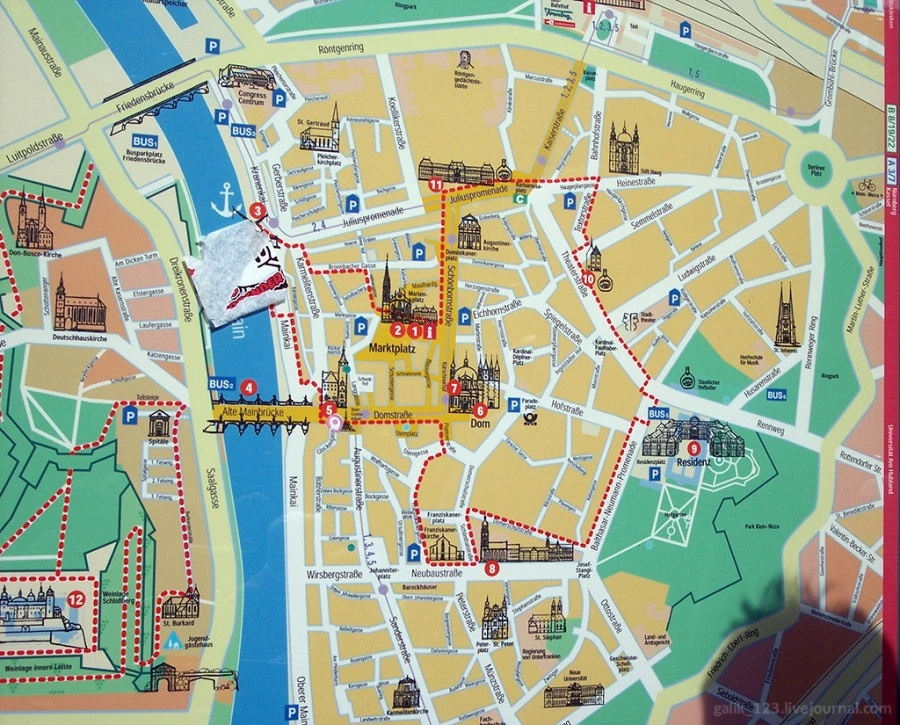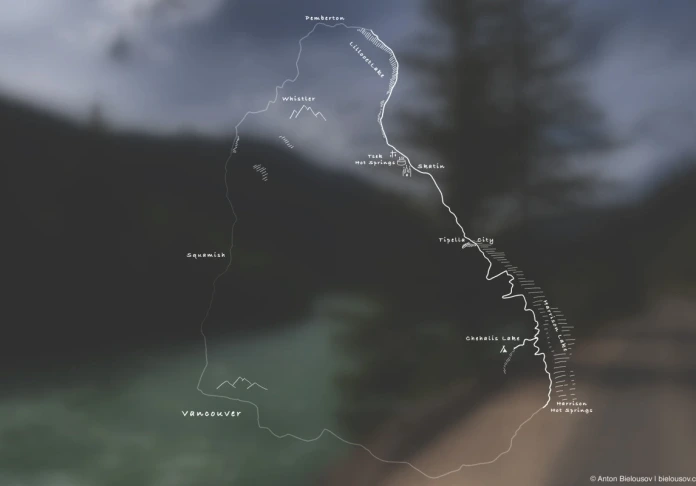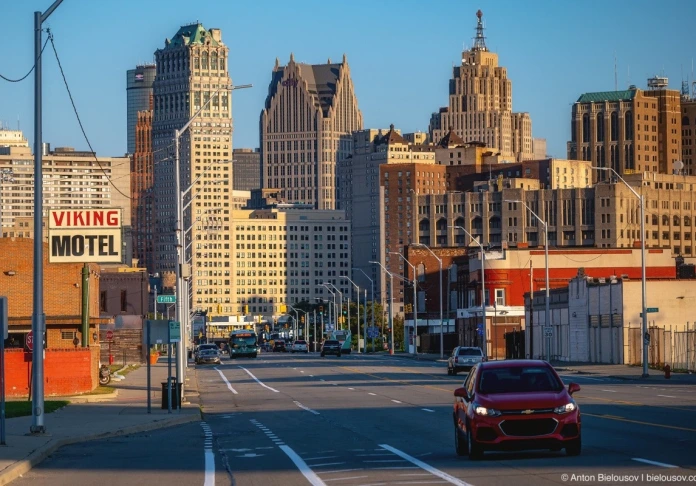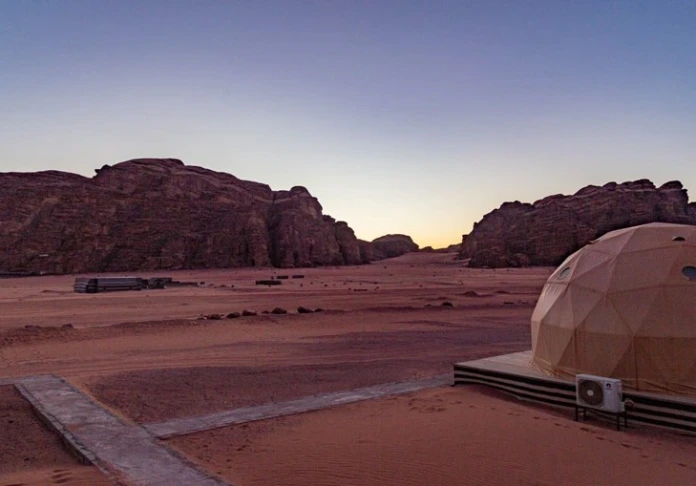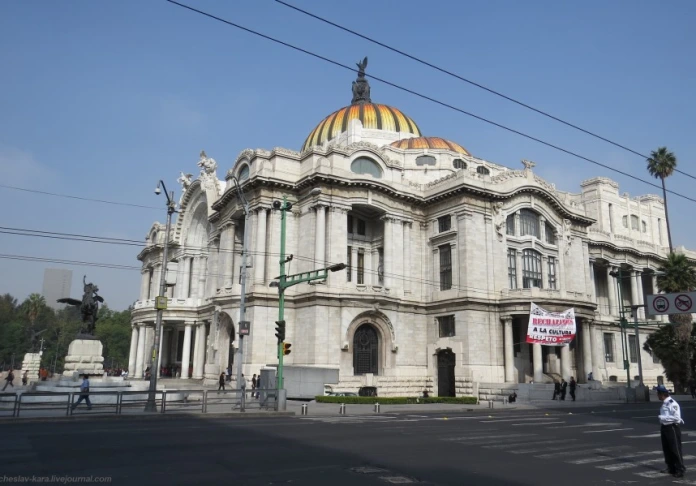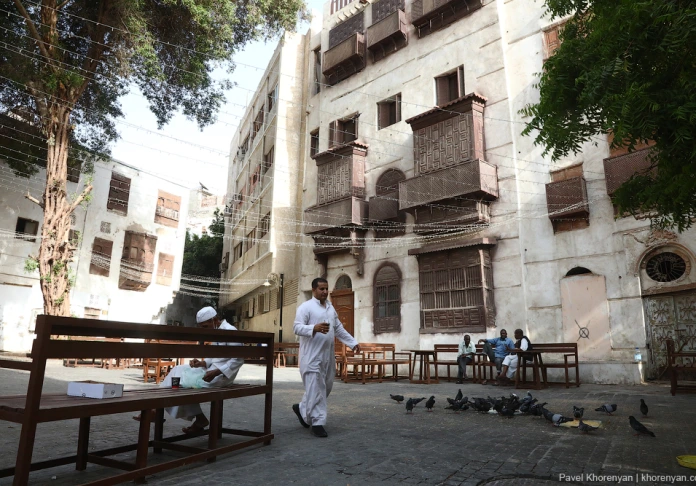Germany
One day in Würzburg
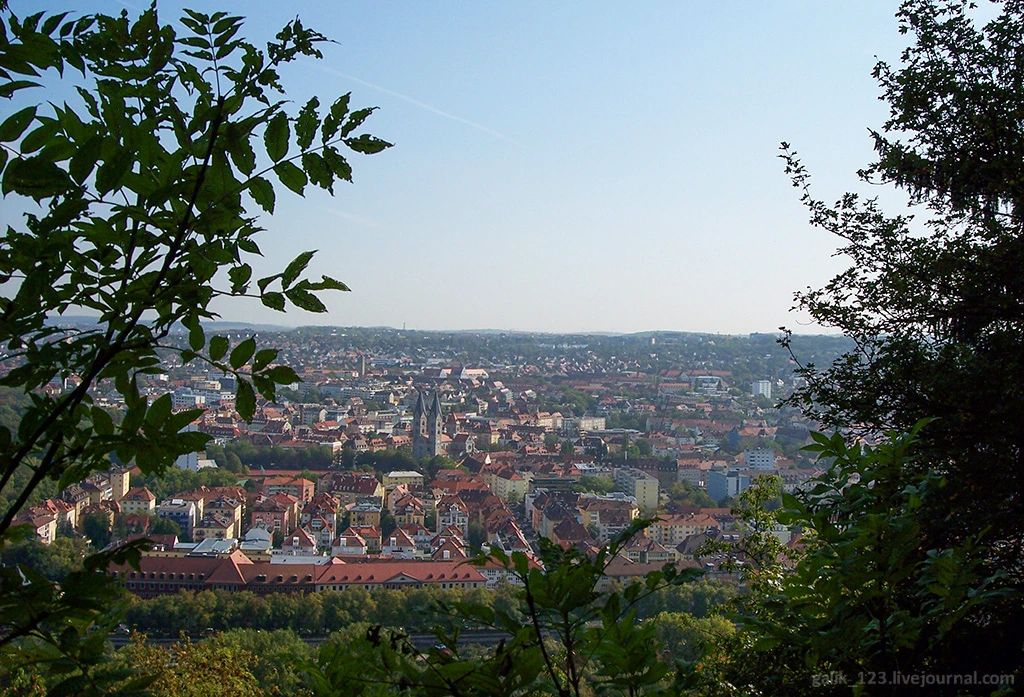
The old town of Würzburg is located on the flat bank of the Main River in Lower Franconia. The city is quite ancient, the first mention of a settlement in these places dates back to 704. Until that time, the Celts lived here. The majority of tourists are Americans, fans of the wine traditions of Franconia and lovers of the Baroque. The main attraction is the Würzburg Palace, which is one of the three most magnificent palaces in Europe, along with the French Versailles and Vienna Schönbrunn.
1. We managed to visit Würzburg in September several years ago, while on holiday in the Czech resort of Marianske Lazne. The distance between these cities is approximately 280 km, and the travel time by car is 2 hours and 40 minutes. We began our acquaintance with the pilgrimage chapel of St. Mary, located on the Nikolausberg hill on the banks of the Main River. It would be rather difficult to get here from the city on foot - you have to walk along the wooden steps laid in the forest thickets.
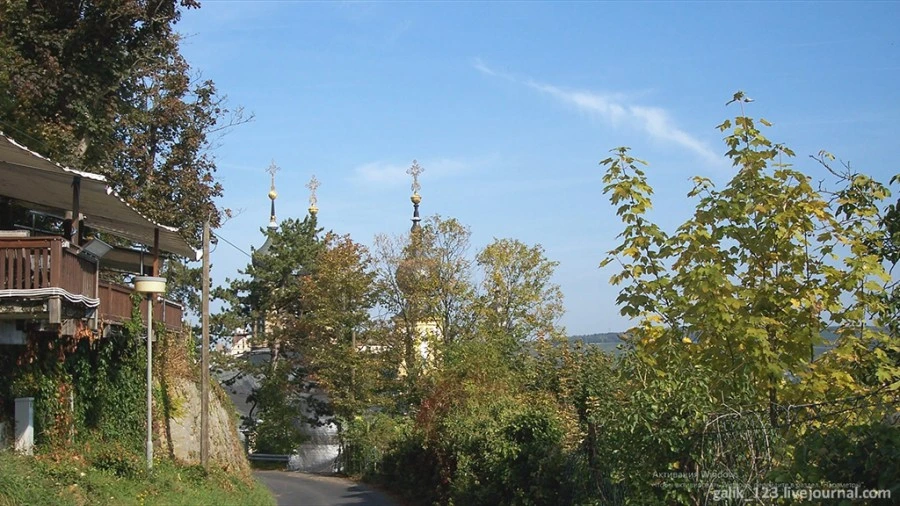
2. The famous German architect Balthasar Neumann contributed to the creation of the harmonious ensemble of the chapel and the chapel.
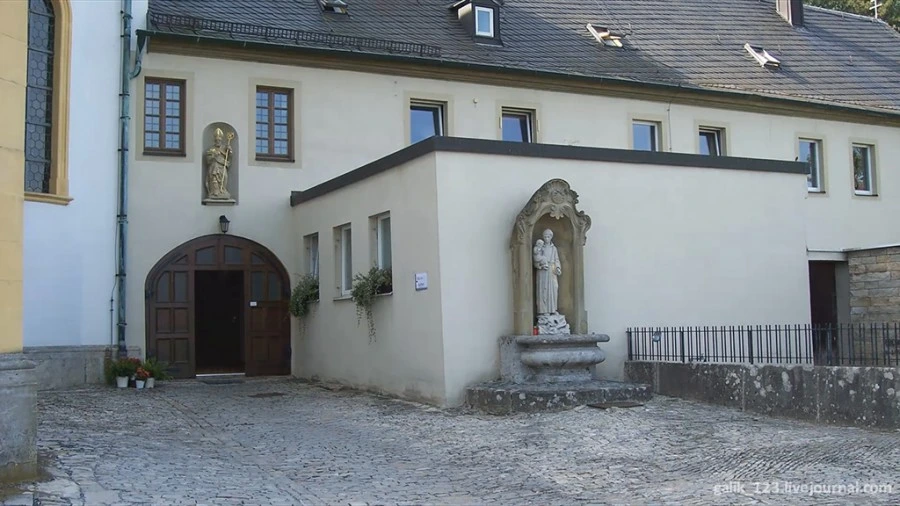
3. This architectural ensemble is complemented by the powerful fortress Marienberg. It was built in the XI-XIII centuries and became the main residence of the princes-bishops, until a large episcopal palace was built in the city. Picturesque Franconian vineyards are spread around. In Celtic times, the hill was home to a walled settlement and a pagan sanctuary.
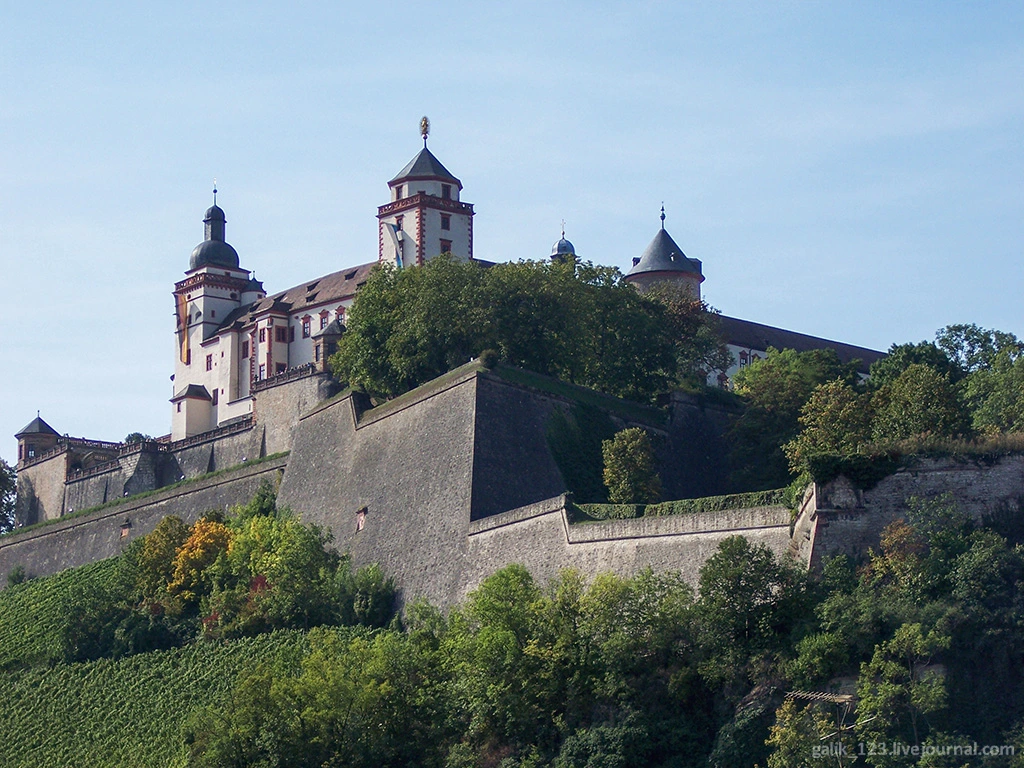
4. In 1156, the emperor Frederick Barbarossa, who was especially fond of the city, chose it as the place of his wedding ceremony with Beatrix of Burgundy, and 12 years later he bestowed the title of Duke of Franconia on the local bishop and his successors.
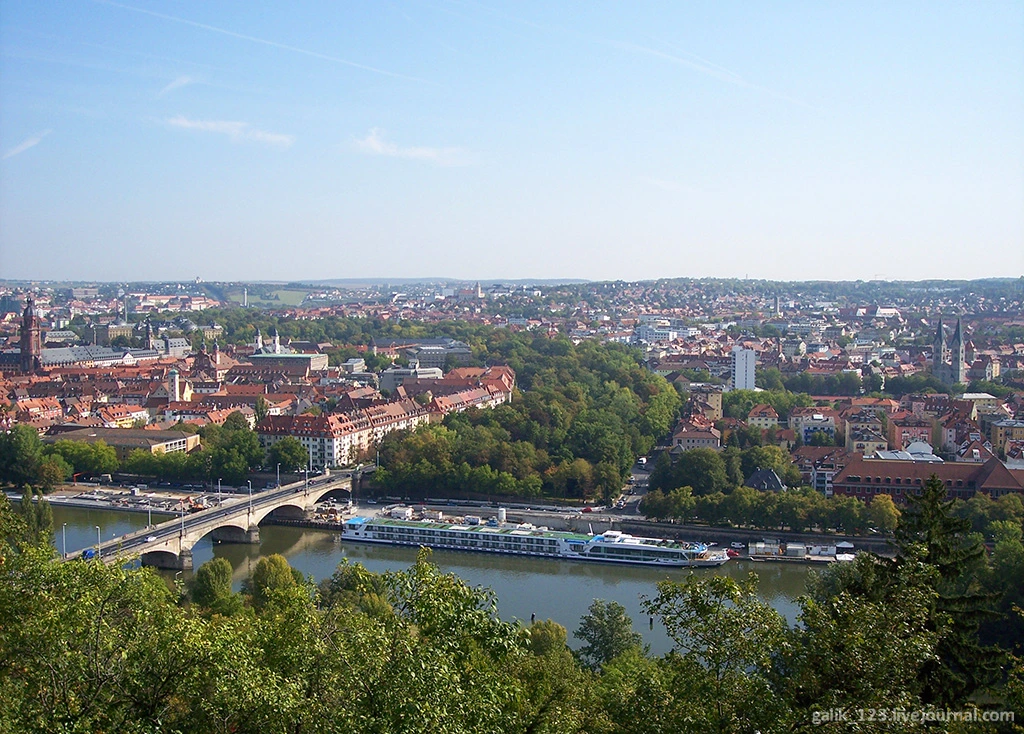
5. From the observation deck next to the pilgrimage chapel one can see the Cathedral of St. Kilian, the parish church of St. John, the dome of the Romanesque church of Neumünster. From here we went down to the Old Bridge, as it seemed from above, somewhat similar to the Charles Bridge in Prague.
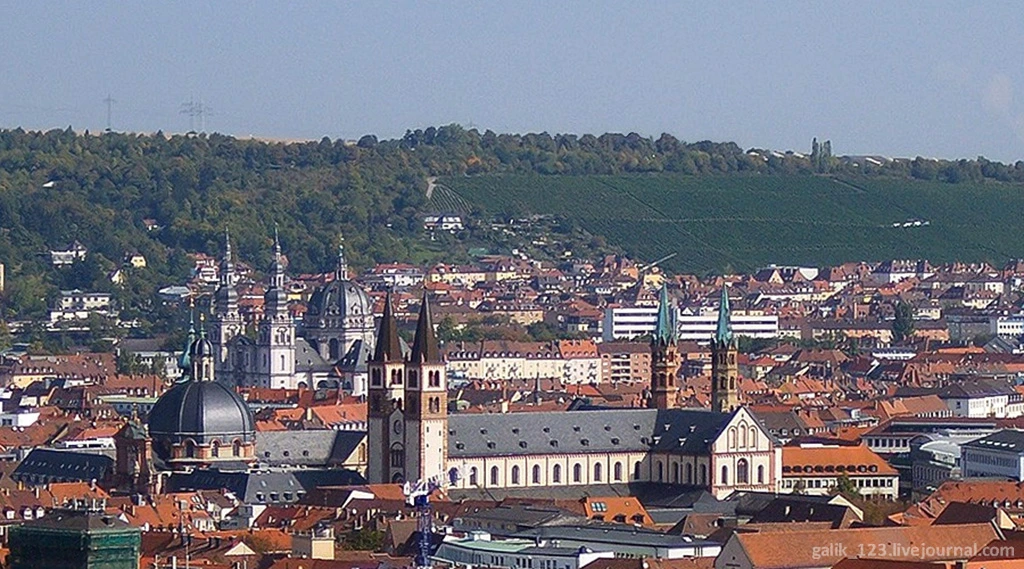
6. The old bridge was erected in the years 1473-1543. In 1720, figures of six saints were installed on it, and later - six more kings and bishops, who left their mark on the history of Würzburg, for example, Emperor Charlemagne. On the bridge there are also sculptural images of three Irish missionaries who arrived in the city in 689 - Bishop Kilian and his companions. According to legend, Kylian and his missionary companions were killed by the secret order of the duke's wife, who became his brother's wife. The Christian priest believed that such a marriage was contrary to the rules of the church, for which he paid with his life.
A street leads to the city center, which ends at the Cathedral of St. Kilian, built on the saint's grave. This church is the fourth largest Romanesque church in Germany and the most important architectural monument.
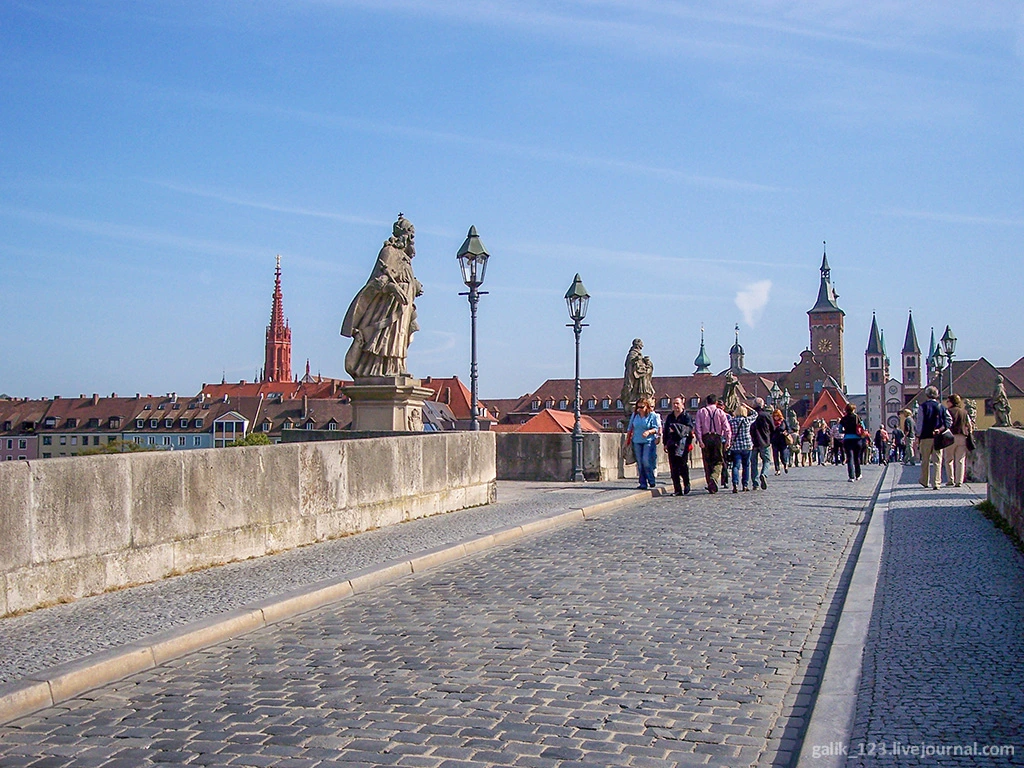
7. From the bridge, the pilgrim chapel is clearly visible, from which we began our acquaintance with Würzburg.
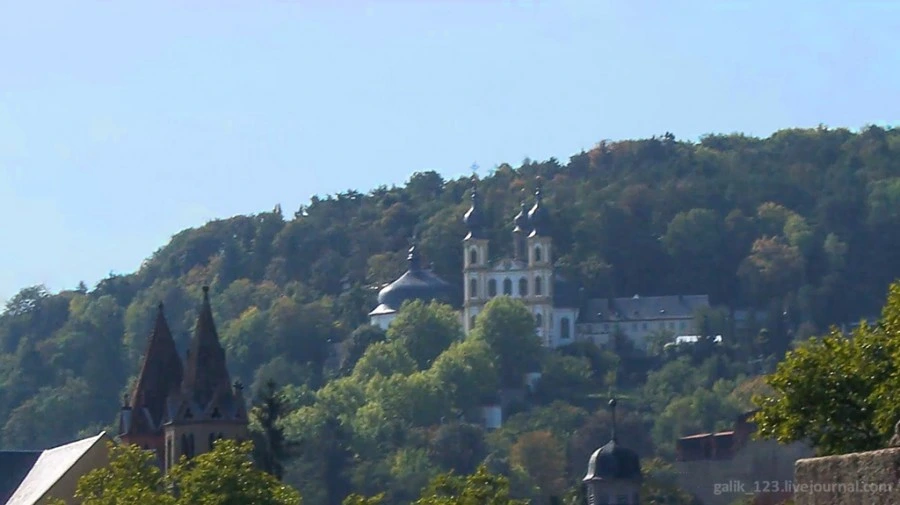
8. The oldest secular building in the city is the 13th century town hall. It is the only example of Romanesque architecture that survived the Second World War. On the facade there is a sundial (1453). The town hall tower has a name - Grafenkart. The local feudal lord Count Eckart was killed in 1200 on the doorstep of his own house, and the tower was named after this respected citizen, which was bought along with an extension from the Eckart family.
In the XIV century, an important historical event took place within the walls of the town hall: King Wenzel, having sorted out the wine, promised Würzburg the status of an independent city, and after sleeping, took his words back in the morning. in honor of this memorable event, the tavern on the first floor of the town hall was named after him.
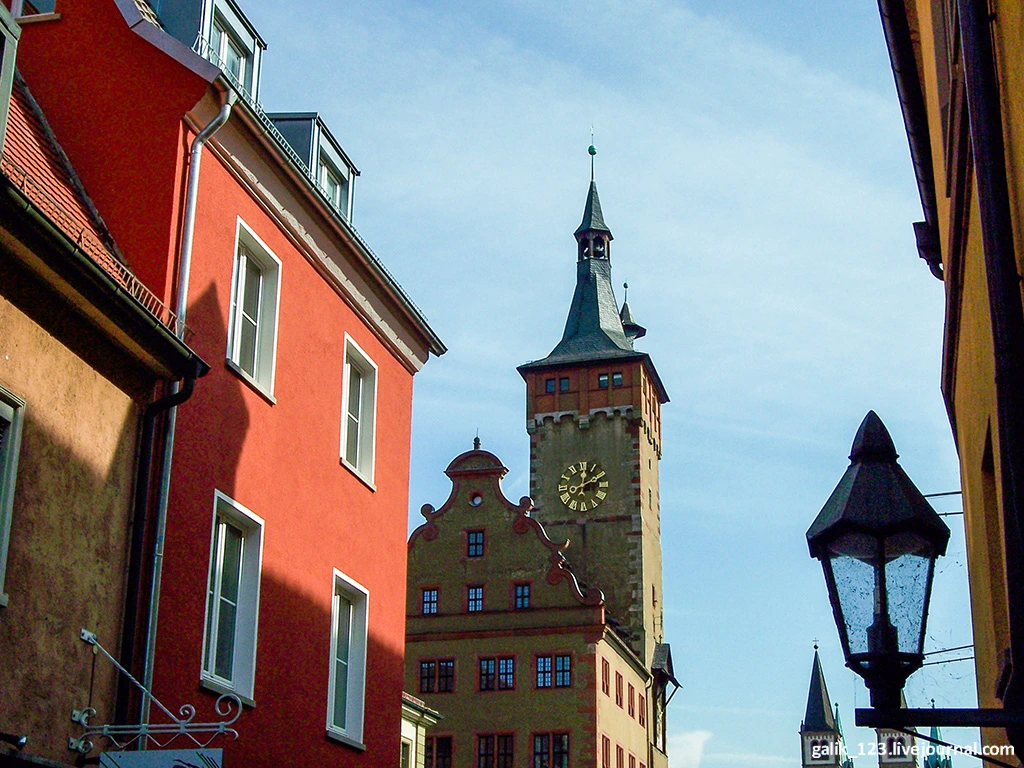
9. On the right, the fountain of four pipes is the most beautiful of the fountains in Würzburg. The four female figures symbolize the four virtues: justice, wisdom, moderation and fortitude. On the high obelisk there is a figure of Franconia. The fountain is located near the Old Bridge and has always been a popular meeting place for locals and tourists.
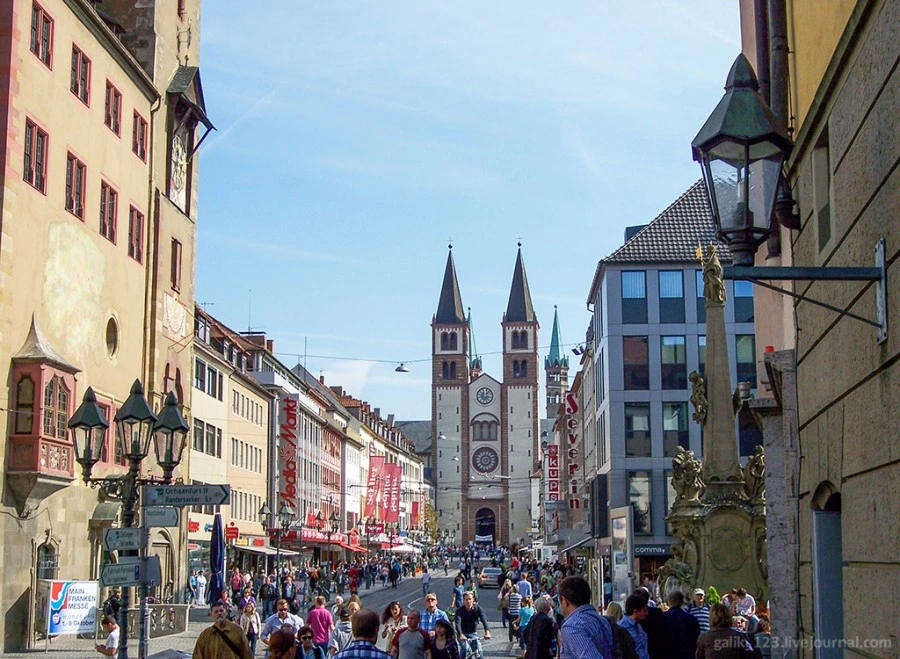
10. The fountain was restored several times as the local sandstone was weathered. Currently, the original is kept in the Franconian Museum, and on the square in front of the Old Bridge we see a copy.
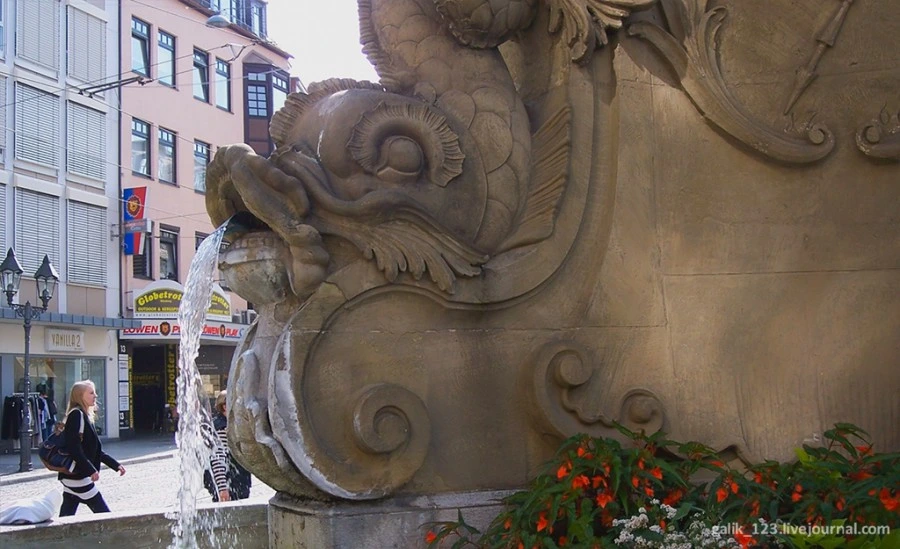
11. On the market square there is a baroque church of the Virgin Mary (XIV-XV centuries).
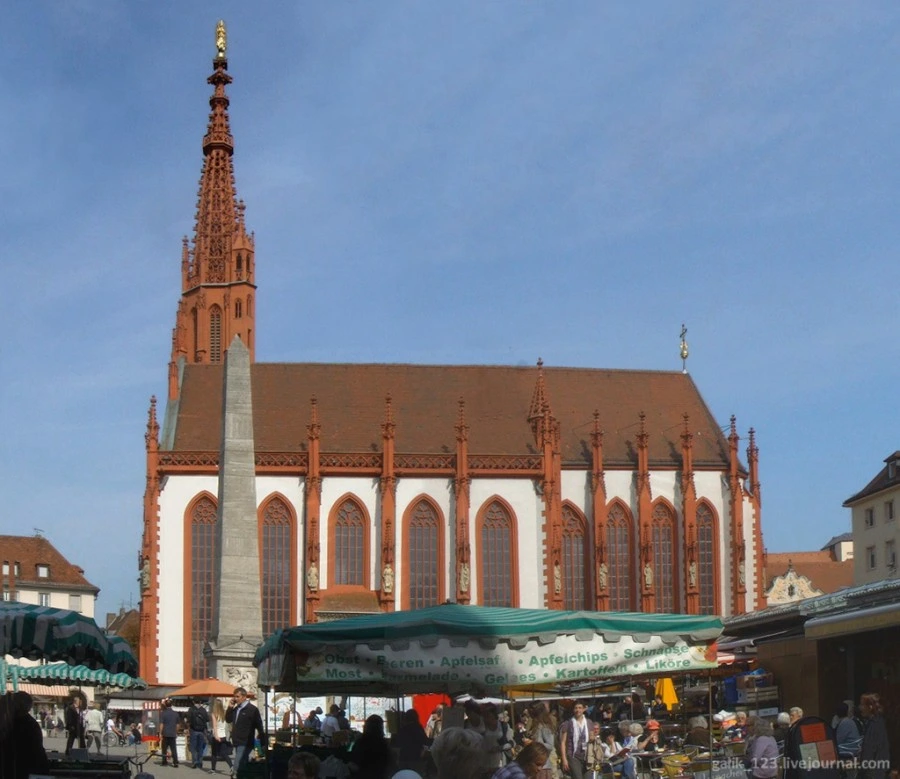
12. Nearby - the former building of the U Sokol hotel with a Rococo facade (18th century)
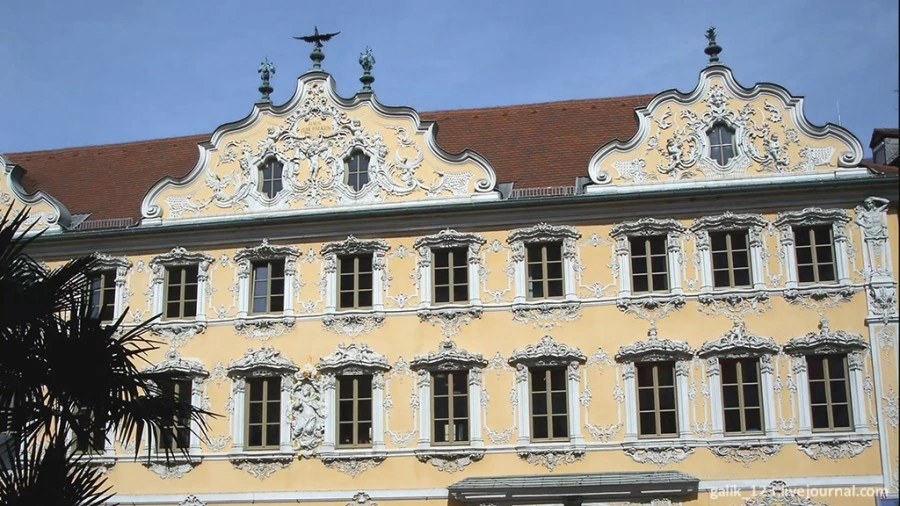
13.
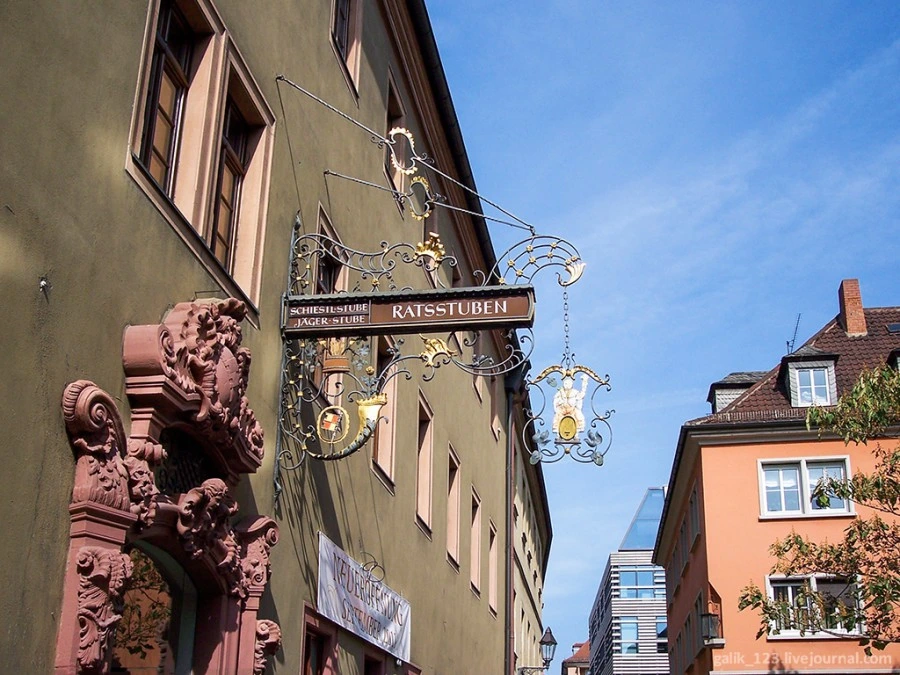
14. In the oldest restaurant in Würzburg, we learned from a waiter from Ukraine that there are relatively few Russian tourists here. He told us that mainly Americans have to be served. This is not surprising: since 1945, a large American military base has been located in Würzburg, which was completely closed just recently.
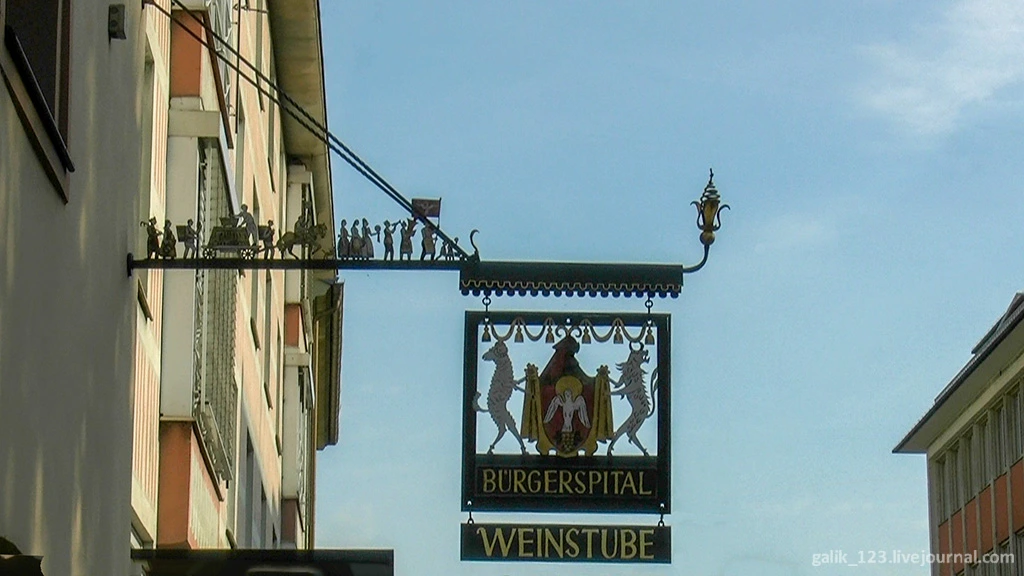
15. The Neumünster church with a concave baroque facade is one of the most important sights of Würzburg, the main place of veneration for the Franconian apostle Kilian and his associates, who converted the ruling family of the duke to Christianity. An exquisitely ornate baroque building built of red sandstone. Both the cathedral and the church were rebuilt from the ruins after World War II.
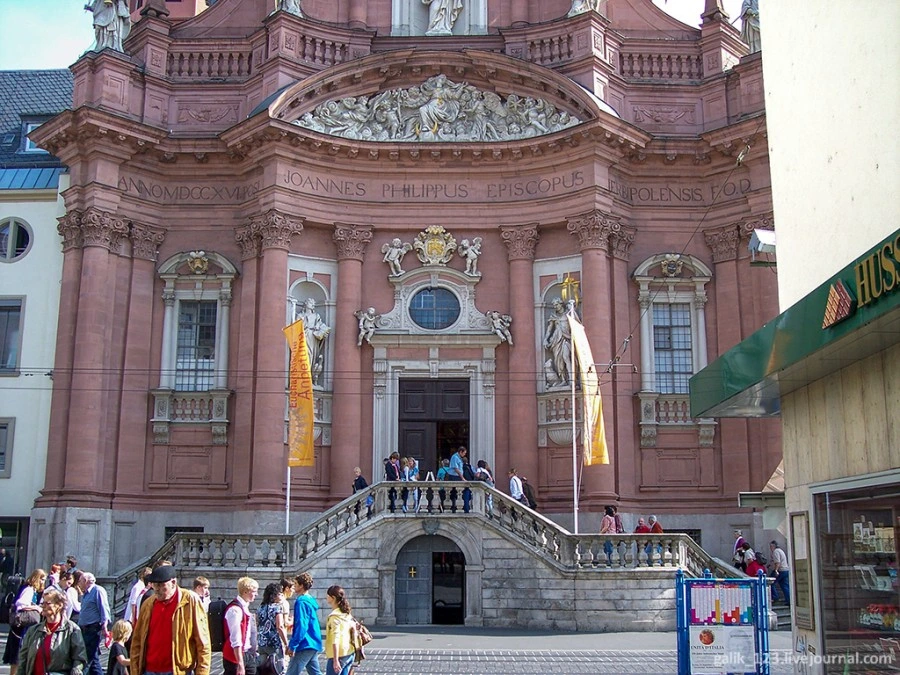
16. The main Baroque landmark of the city is the bishop's palace, located in the very center of the city, on the Residenzplatz square. The palace was erected in the 18th century by order of the bishops of the Schönborn family. Famous architects from Mainz, Vienna and Paris worked on its creation under the leadership of Balthasar Neumann. The residence was included in the UNESCO World Heritage List in 1981.
The size of the residence is enormous, especially its grand staircase. After passing the Honorable Courtyard, the carriages entered the lobby, in which a team of 12 horses could freely turn around.
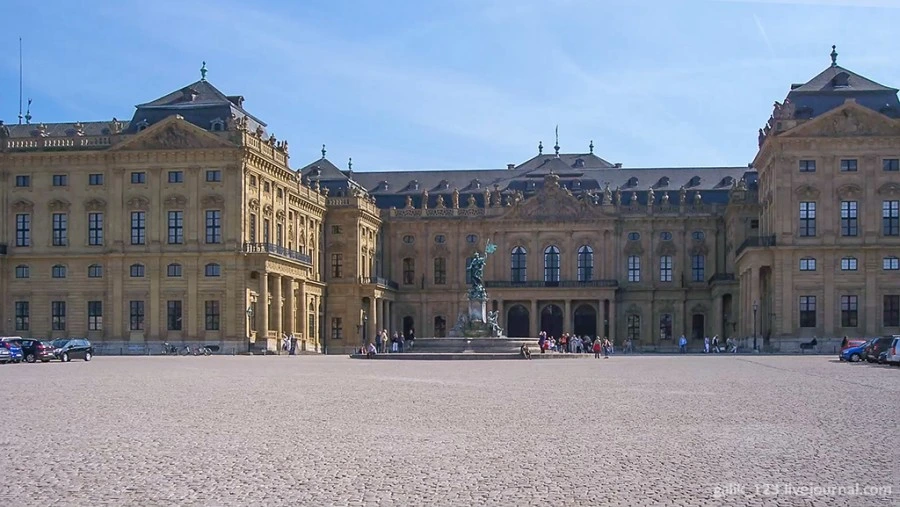
17. On the square in front of the main entrance to the residence there is a fountain with a female figure - this is, of course, another Franconia. She is surrounded by figures of the most famous townspeople. Among them is Balthasar Neumann, the leading German architect of the Baroque era. His career actually began with the episcopal residence. By the time the order was received, Neumann was only 33 years old. Prior to that, he was a master of weapons. The talent of the young master was discerned by the then bishop of Würzburg, Johann Philip Franz von Schönborn. Construction and fit-out took almost 60 years.
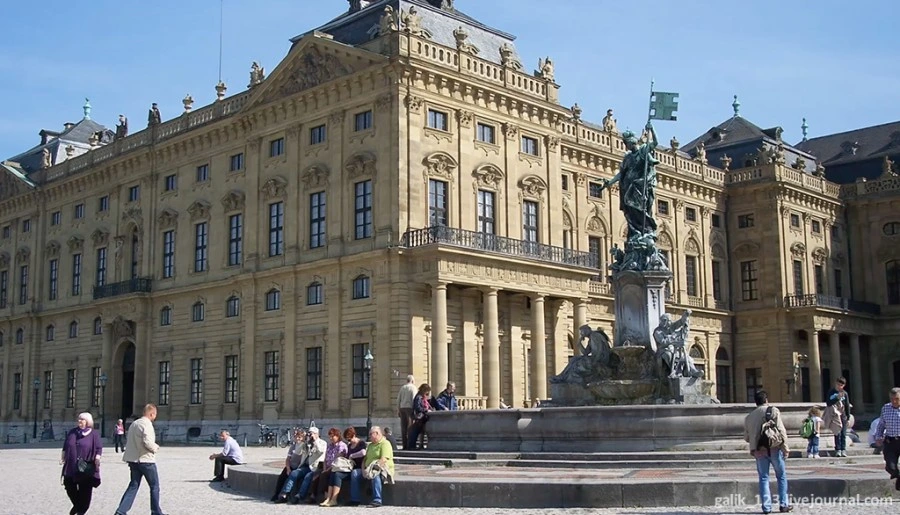
Already at the first stage of construction, a confrontation between Neumann and the most influential Vienna architect Johann Lucas von Hildebrandt began, among whose famous works were the Upper and Lower Belvedere palaces. It is said that Hildebrandt promised to hang himself on a hook, which he himself would drive into the ceiling of the grand staircase. Neumann designed a brick vault without additional supports, and Hildebrandt believed that Neumann had made a mistake in his calculations. Later, it was on this vault that Tiepolo placed a huge fresco.
However, this vault also withstood the fire that arose as a result of the British air raids in 1945. The wooden roof burned down, and the stone ceiling remained intact along with unique frescoes.
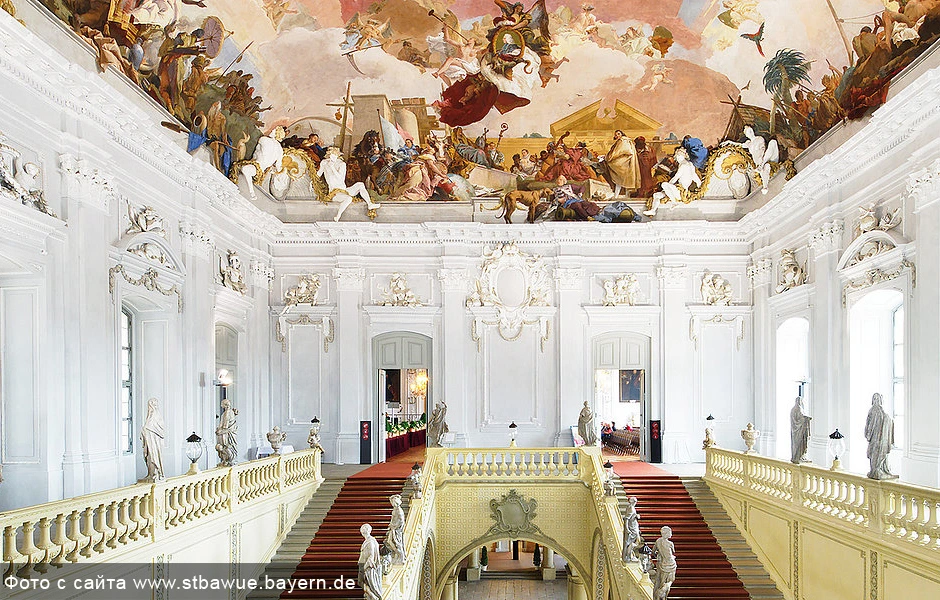
The interior of the palace is decorated with ancient frescoes by the Venetian artist Giovanni Batista Tiepolo. The fresco above the main staircase, allegorically depicting parts of the world, is the largest in the world, a late Baroque masterpiece.
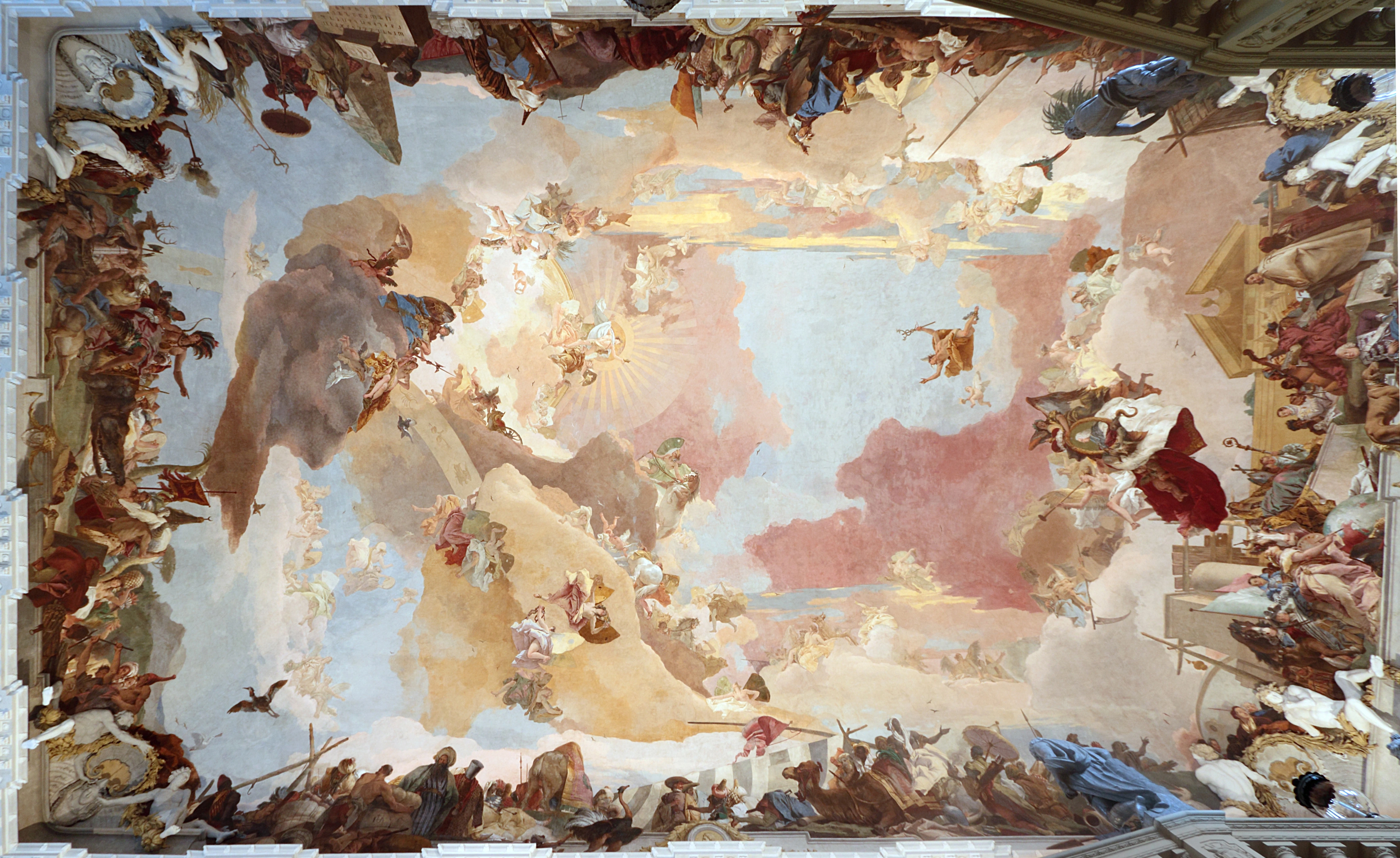
The Imperial Hall is the most luxurious room in the residence. Its walls are partly tiled with marble, while the rest of the space is decorated with frescoes by Tiepolo and openwork stucco moldings by Bossi. On the dome is Apollo's solar chariot with the emperor's bride, on the sides are scenes from the history of Würzburg. The first one depicts the wedding of Emperor Frederick Barbarossa, which took place here in 1156, the second, during the presentation of the diploma to the Würzburg bishop on conferring the princely title in 1168
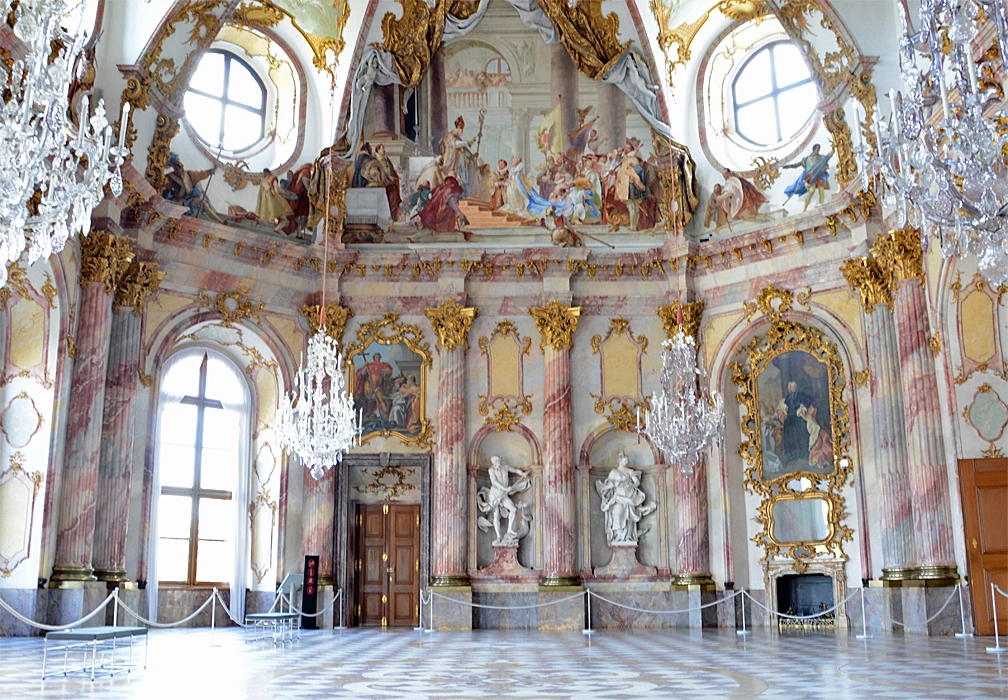
idenz
During the construction and decoration of the palace under Neumann, five bishops were replaced. Only under one of them did he fall out of favor and was suspended from work.
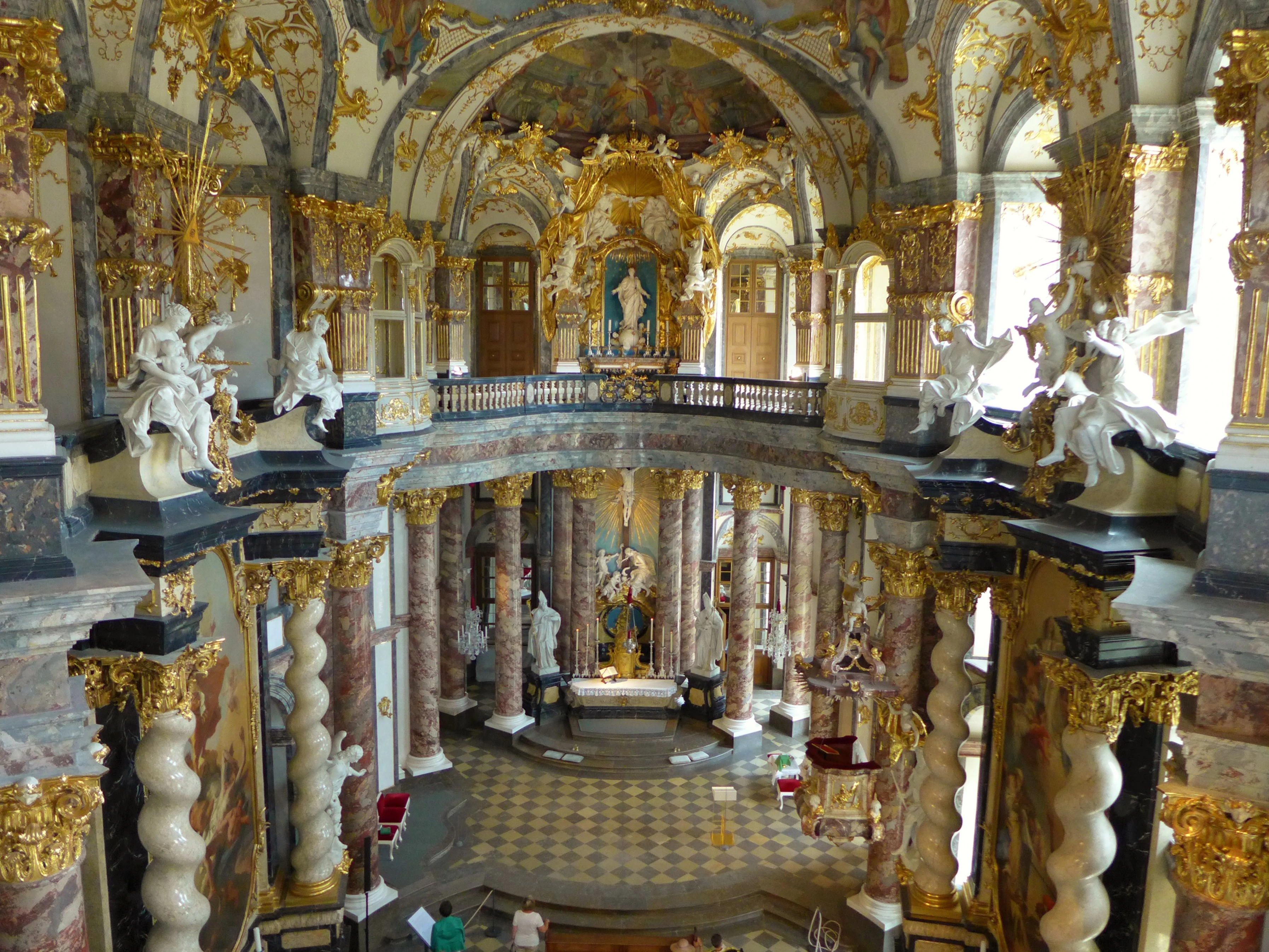
18. Around the residence is a magnificent park, which can be entered through the gate on the square, crowned with the imperial crown (workshop of Georg Egg, 1748-1751).
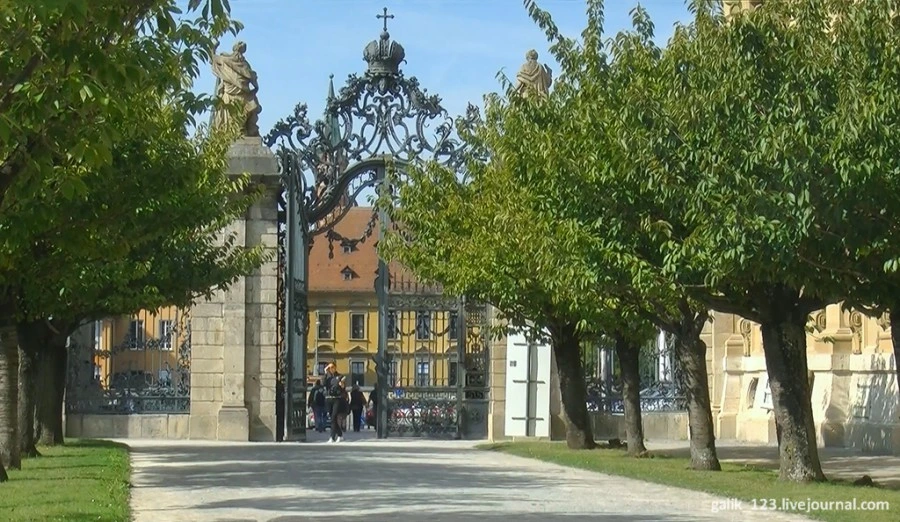
19. The southern garden is located on one level, bounded by the side facade of the residence and the greenhouse. This part of the park has a regular rectangular shape, and its structure resembles the layout of the gardens in the Austrian palaces-residences. One of the main attractions is the sculptural groups "The Rape of Europa" and "The Rape of Proserpine" by Johann Peter Wagner.
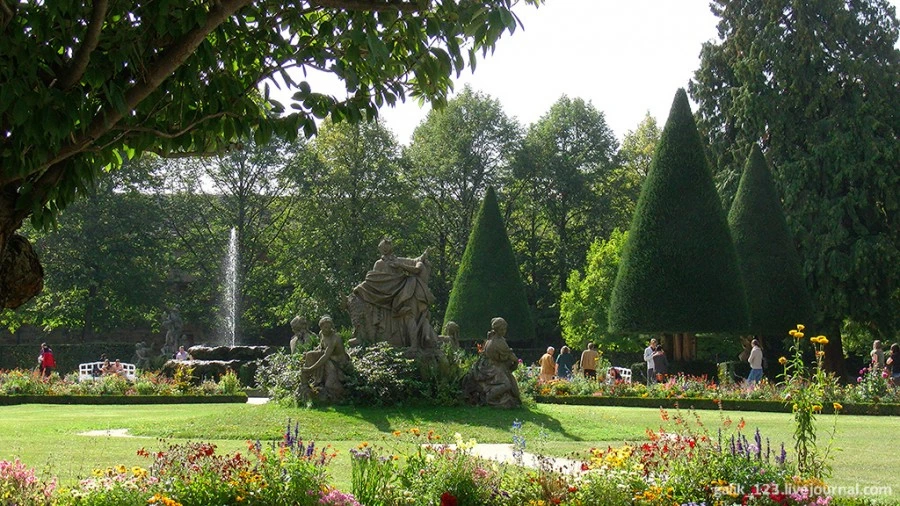
20. The crowns of the trees are trimmed in accordance with historical patterns - in the form of cones and other geometric shapes.
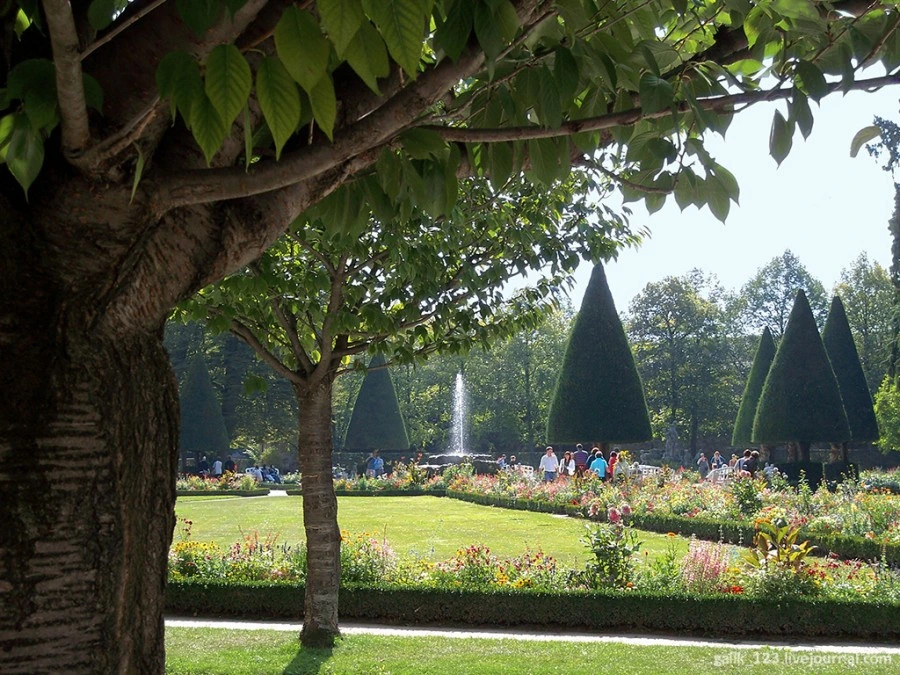
21. The eastern façade of the Würzburg Residence is considered one of the finest pieces of Baroque architecture. The garden laid out in front of him further emphasizes its solemnity ..

22. From the guest quarters, intended for the emperors of the Holy Roman Empire, there was a beautiful view of the regular oriental garden.
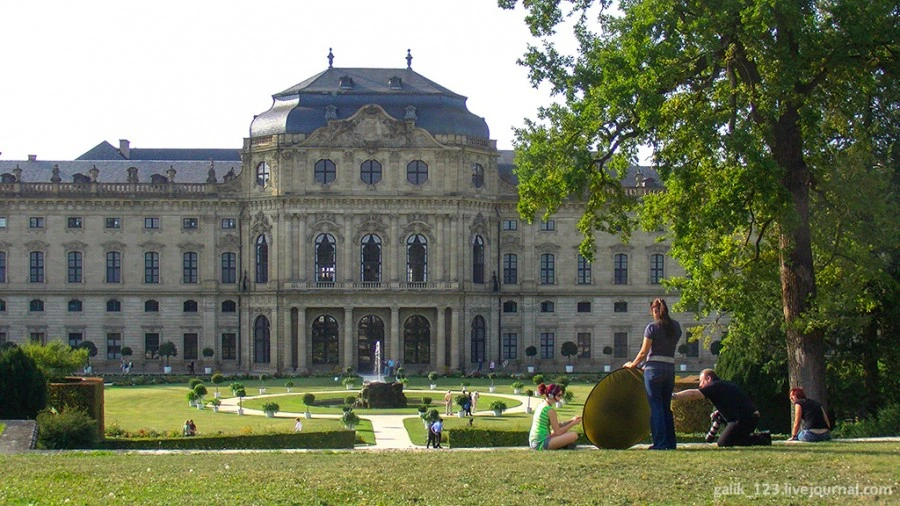
23. The upper terrace is accessed by side stairs.
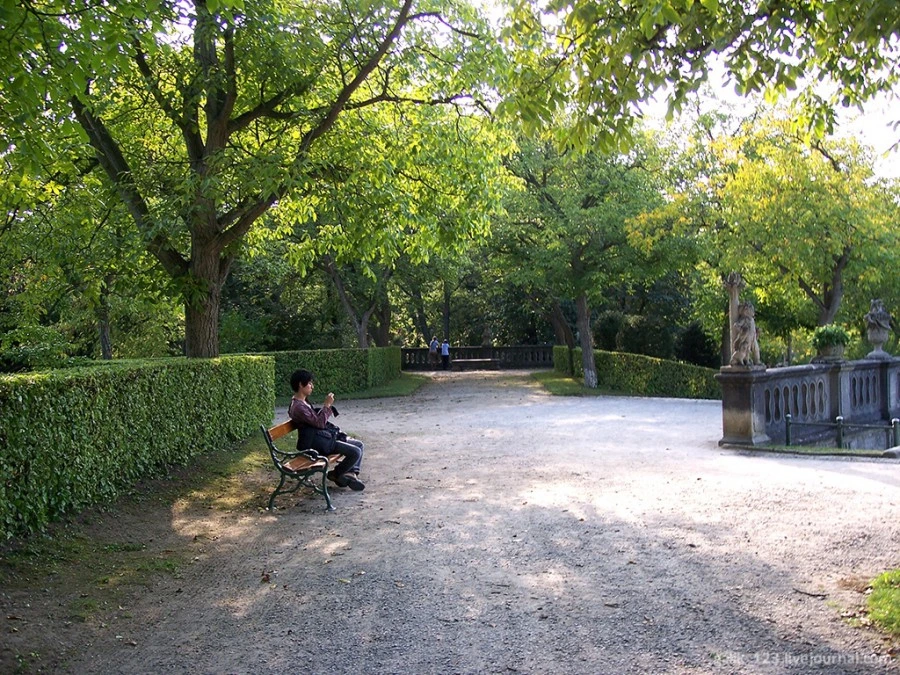
24. Their railings and balustrades are decorated with stone vases and sculptures of children at play.
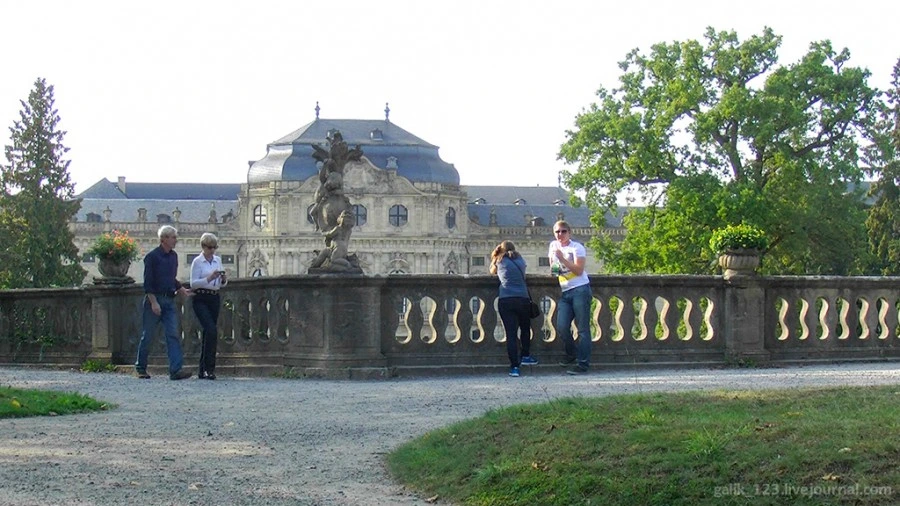
25.
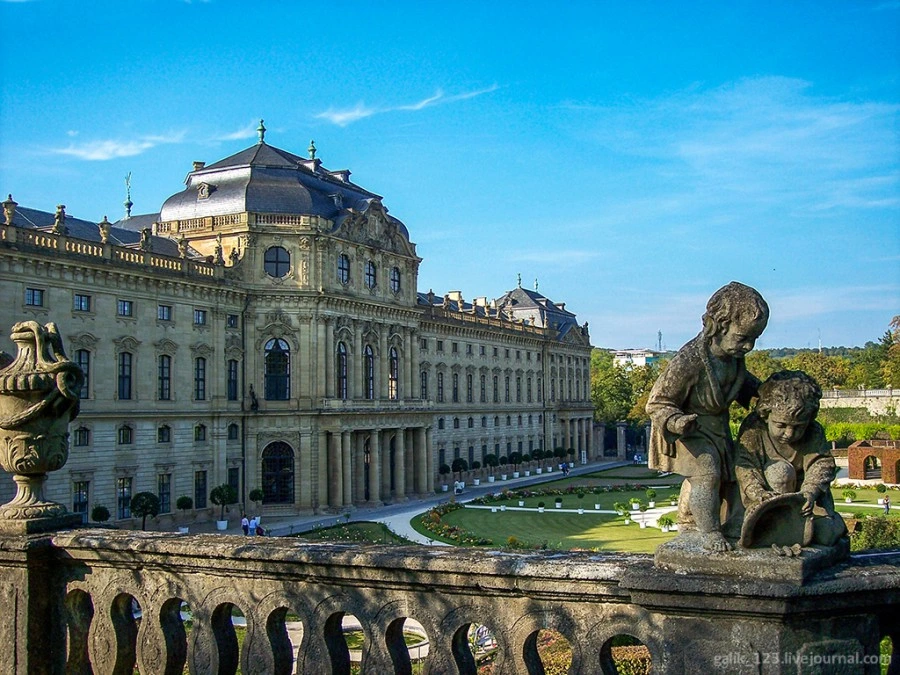
26. During the Second World War, during a 17-minute raid by British aircraft, 90% of the buildings in the center of Würzburg were destroyed. The Würzburg residence was also badly damaged, but still miraculously survived.
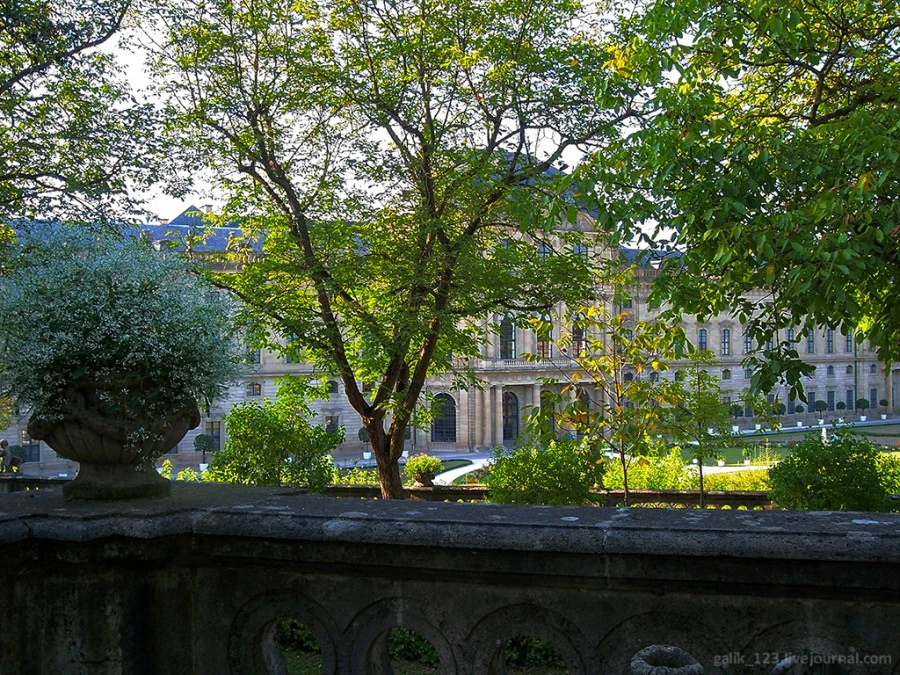
27. Time in the palace park flew by quickly.
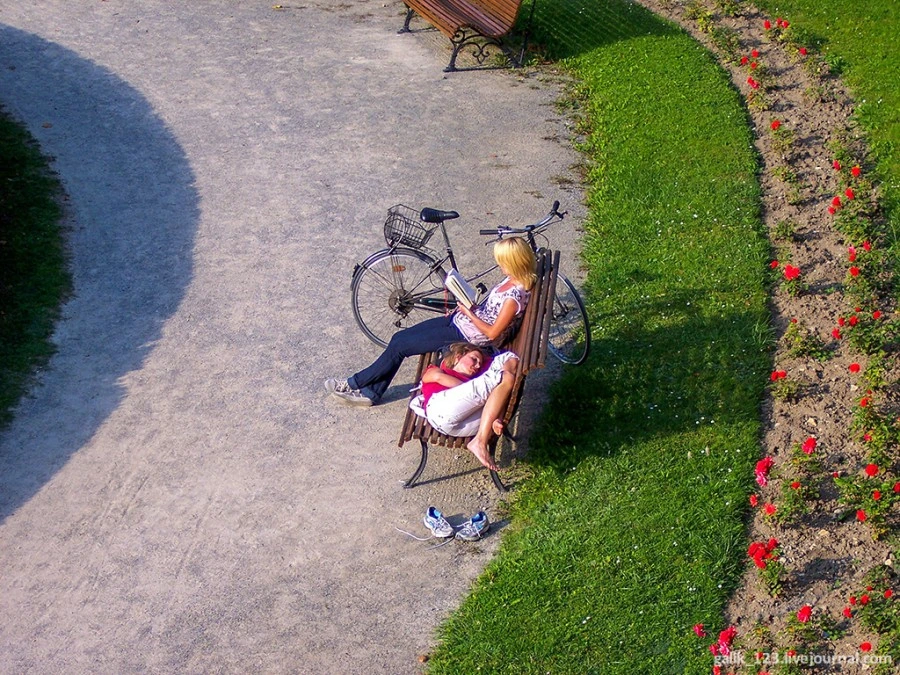
28. I would love to visit Würzburg again in order to inspect the episcopal palace, and not run through it, it is better to feel the scale and luxury, to inspect the halls without haste.
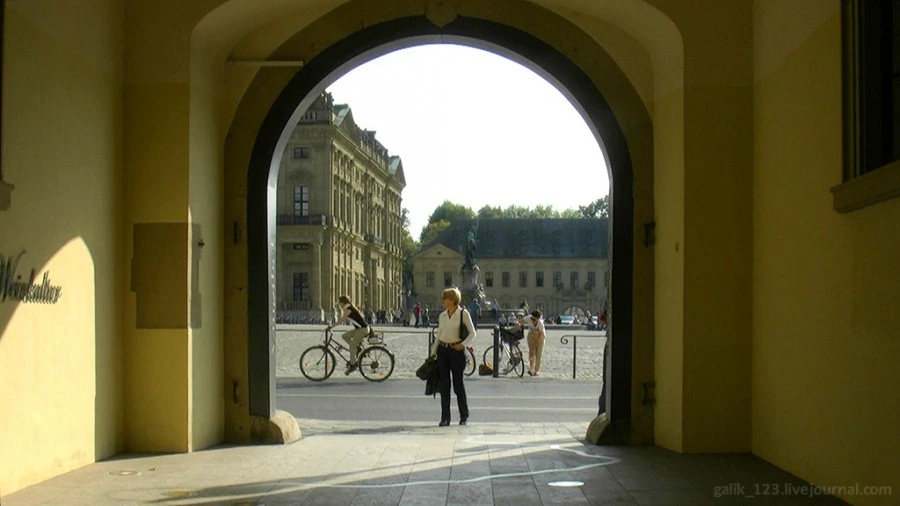
29. If you do not go inside the Würzburg residence, then one day may be enough to explore the city.
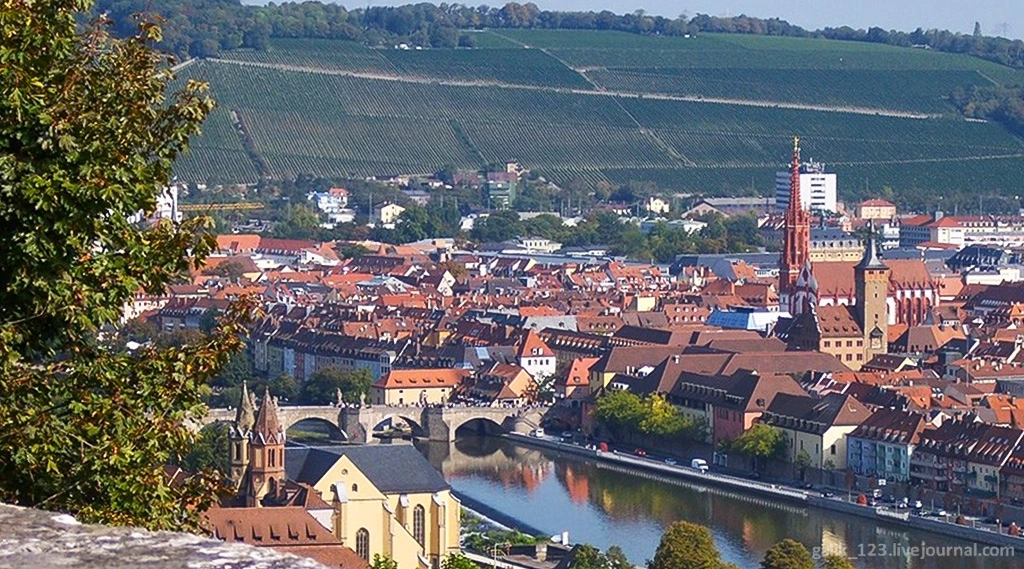
30. However, it is clear from the map that we could not see everything in a few hours.
